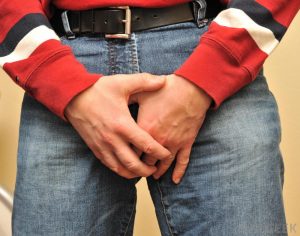How to define pain and swelling of the testicles?
The testis is a complex organ, particularly sensitive to minor lesions, and extremely sensitive. Any testicle problem can cause immense pain.
Testicular pain or swelling of the testis are abnormal signs that require consultation with a doctor. The diagnosis cannot be done at home alone. The problem can be mild or sometimes very serious, even requiring the removal of the testicle.
The testicular pain is a scrotal pain, that is to say, that includes the entire scrotum. It is a pain that rises following the anatomical path of the various channels to reach the iliac fossa and even the lumbar fossa.
What are the causes of testicular pain and swelling?
The first diagnosis of testicular pain is testicular torsion: torsion of the spermatic cord containing blood vessels resulting in testicular ischemia and then necrosis (testicular death) if no treatment is given on time :
- it is a brutal pain, intense, without triggering factor
- it affects children and young adults and is exceptional in men over 30
- it is accompanied by swelling and redness
- the palpation is made impossible so much the pain is great
- it requires rapid surgical exploration in order to untwist the spermatic cord. Once this step is over, the doctor fixes the testicle to avoid a recurrence.
Pain is considered to be testicular torsion until proven otherwise. Once again, it is necessary to consult a urologist in Ghaziabad as soon as possible.
Other possible causes of testicular pain and swelling are:
- Orchiepididymitis: inflammation of an epididymis (or epididymitis) and inflammation of a testicle with fever and burning
- Testicular trauma following a stroke in the testicles: it may be a scrotal hematoma, a contusion or even a “fracture” of the testicle
- Testicular cancer (possible presence of mass, pain, and swelling)
Note that hydrocele, or accumulation of water around the testicle, causes sometimes impressive swelling of the entire scrotum. But there is most often no associated pain.
Sometimes pain and swelling do not have clear causes, but it is important to proceed by elimination and to oust other potential causes.
It is possible that the pains become chronic. It can then be:
- varicocele: varicose dilatation (varicose veins) of the spermatic cord veins. The blood circuit is obstructed and the blood circulation slows down. As a result, the production of spermatozoa is reduced.
- of the presence of cysts on the epididymis (we speak of spermatocele)
What are the consequences of pain and swelling of the testicles?
The pain and swelling of the testicles cause more or less discomfort, yet affect the sex life of the person affected. If these problems are poorly treated or not treated in time, the consequences can be dramatic: sterility, and even removal of a testicle (especially in case of testicular torsion not treated in time).
What are the solutions to relieve pain and swelling of the testicles?
The emergency consultation of a urologist in Vaishali is essential in case of pain and swelling of the testicles. The doctor may, depending on the case:
- perform a scrotal ultrasound
- perform surgery
- propose to wear underwear providing special support, if necessary.
To prevent the occurrence of hydrocele, varicocele, or testicular problems, it is important to perform a regular self-examination.
Testicular cancer
Testicular cancer is one of the cancers that heals best since the cure rate approaches 100% (less than 1% mortality). This testicular cancer is a relatively rare cancer, but it is the most common form of cancer in young men and adolescents, between puberty and 45 years, with a mean age of diagnosis of 37 years. It affects about 1 in 20,000 men. This cancer is increasing steadily, by 2.5% per year between 1980 and 2005 in France. In Canada, the incidence rate of this testicular cancer has increased by about 80% in the last 25 years
Testicular cancers are classified into two broad categories: seminomas and nonseminomas (which include all other forms). Seminomas are more common in older men, while non-seminomas are more common in young men. The only way to confirm the type of cancer is to remove the testicle by surgery to analyze it. This operation is called total orchiectomy. It is done by an incision in the groin.
In almost all cases, only one testicle is reached. Very often, it is the discovery of a suspicious mass during the palpation of the testicles which sounds the alarm. Testicular cancer is cancer that responds well to treatment (95% of men heal). However, treatments, whether by surgery, radiotherapy or chemotherapy, carry risks of infertility.
When to consult
If a man feels a lump or swelling, usually painless and gradually enlarging on one of his testicles, a doctor should be consulted. A small percentage of testicular cancer is likely to lead to early pain. Benign tumors of the testis are rare, and that is why it is necessary to consult quickly.



